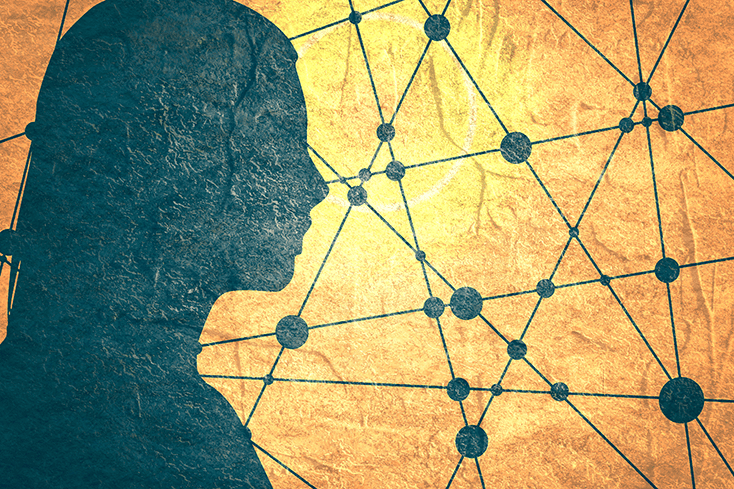December 21, 2022
By Tricia Bartels

We all have dreams, hopes and aspirations that we established when we are young. When we envisioned our futures, we never dreamed of carrying the burden of a mental illness. To many, this may seem more like a nightmare. However, having lived with a comorbid diagnosis for over 27 years, I can tell you that I have been able to find recovery and peace with my diagnoses.
At four years old, I experienced severe and prolonged trauma that caused my mind to “split,” and I developed dissociative identity disorder (DID). DID is understood to be a protective response to this kind of trauma — I am thankful for my DID, for I wouldn’t have survived without it.
Things, however, got more complicated when I was a young adult and was also diagnosed with schizophrenia.
It comes as a surprise to many people that my parts (or “alters”) do not have names. Media portrayals of suggest that DID is a pathological curse and it always presents as a variety of dramatic “characters.” My own daughter doesn’t even believe I have DID because my symptoms are nothing like what she learned in her psychology textbook. Only a few people in my life are aware when I switch to an alter. It is often very subtle, and you really need to know me to see it.
The most difficult and troubling aspect of having DID for me is the dissociative amnesia. According to the Cleveland Clinic, “dissociative amnesia occurs when a person blocks out certain events, often associated with stress or trauma, leaving the person unable to remember important personal information.”
I cannot remember dating my husband of 27 years. I cannot remember my wedding, or my three children growing up. It really bothers me when my family shares memories of one another, and of me, yet I don’t recall any of it. As I age, I experience dissociative amnesia less, and I hope these memories return to me as I continue to work in therapy.
Having the comorbid diagnosis of schizophrenia and DID may be difficult to distinguish from one another, not only to an average person, but even for a professional.
Similar Symptoms
A common and often debilitating symptom of my DID is fear, especially when dealing with flashbacks and memories. My young and older alters alike experience fear like a child would: helpless, hopeless, sheer terror. With my schizophrenia, my biggest symptom is paranoia. This is also a type of fear, but it is “unrealistic” fear, like a fear of going to the grocery store thinking I am being followed or under constant surveillance.
Additionally, because of the DID, I often can be found in private places talking to myself. I am, in fact, talking to the alters inside of me; those that need encouragement, insight or advice. This can look very similar to someone with schizophrenia experiencing delusions.
Rooted in Trauma
Childhood trauma is a given when it comes to acquiring DID, but it also is more common than we think for those with schizophrenia. Studies have shown that 17-46% of people with schizophrenia have some type of childhood trauma.
Medication Helps with Both
My schizophrenia can be treated with anti-psychotic medication. When my medications are stable, my paranoia and delusions are manageable, and even the DID is more manageable. The less anxiety I experience from either diagnosis, the less my symptoms interfere with my everyday life.
I see a therapist twice a month to help manage my DID. Finding a helpful trauma therapist took many years. It has been my experience over the past 30 years that practitioners are not always comfortable talking about DID.
I discovered that if a professional is willing and open to listening to you talk about all your symptoms, whether that be from DID, depression, bipolar, etc., the treatment outcome will be more favorable. Also, the more I educate myself about my illness, the easier it becomes to treat because I can better articulate how I think and feel.
In addition to therapy and medication, I follow a very strict “treatment” regime:
Understanding that it is very difficult to live with mental illness, I try to fill my days with doing things I enjoy. The library is probably my most favorite place to go, and I surround myself with positive “family” who are healthy and healing for me.
Yes, my hopes and dreams may have turned out differently than I wished 30 years ago, but that’s ok because I love problem solving, I love those in my life and I love myself.
Tricia Bartels is a wife, mother, author and friend. She is happiest when writing or reading. Tricia has one book published and hopes to publish more in the future. While in college, before her symptoms of schizophrenia started, she worked as a storyteller, traveling all over West Michigan telling her tales.
We’re always accepting submissions to the NAMI Blog! We feature the latest research, stories of recovery, ways to end stigma and strategies for living well with mental illness. Most importantly: We feature your voices.
LEARN MORENAMI HelpLine is available M-F, 10 a.m. – 10 p.m. ET. Call 800-950-6264,
text “NAMI” to 62640, or email. In a crisis, call or text 988 (24/7).